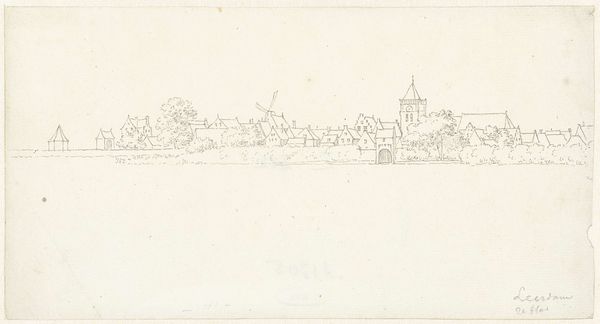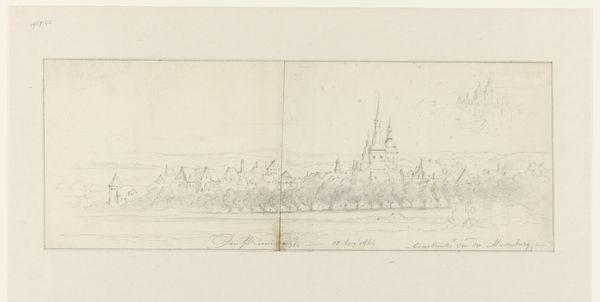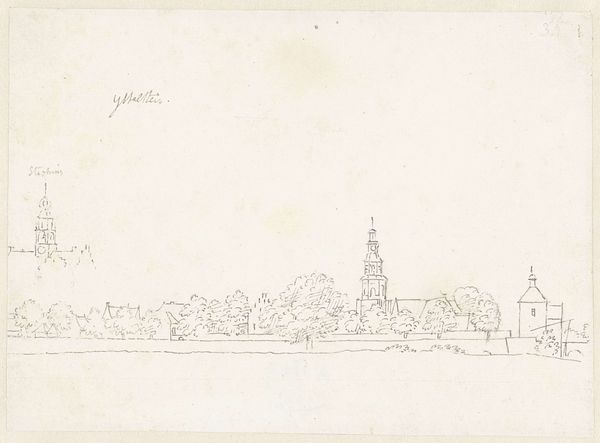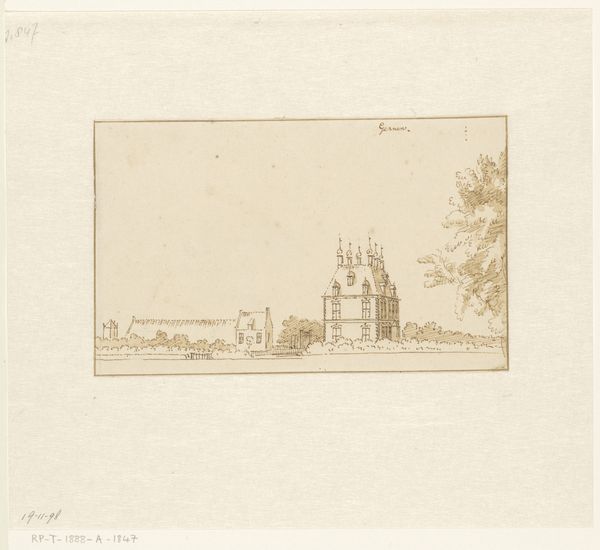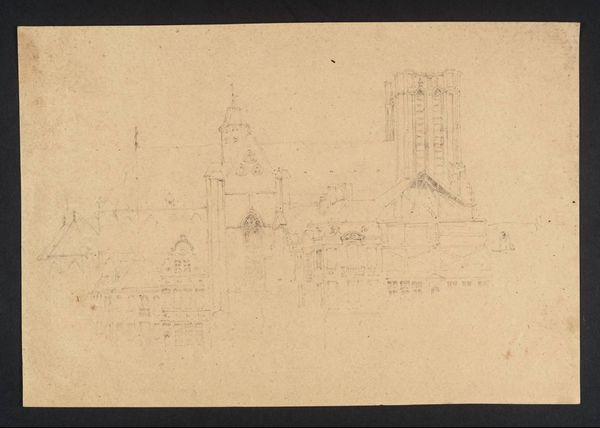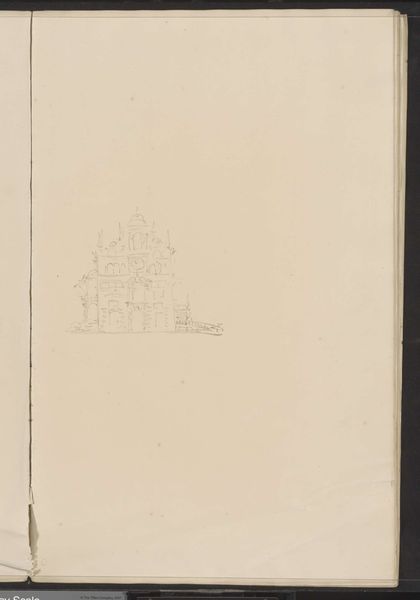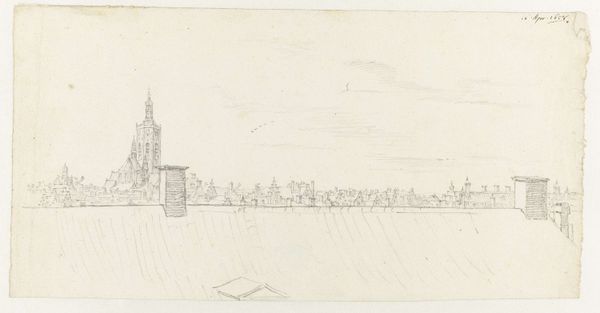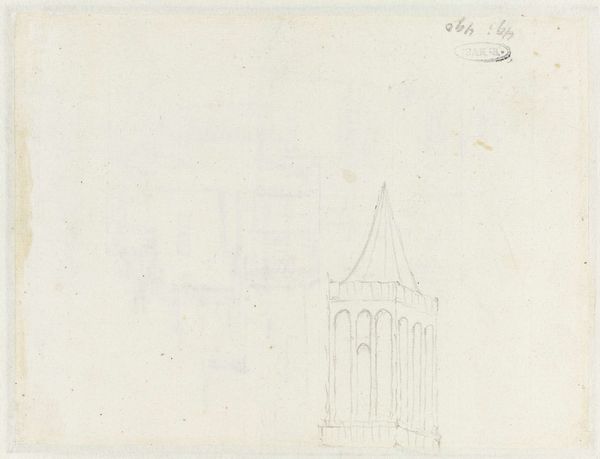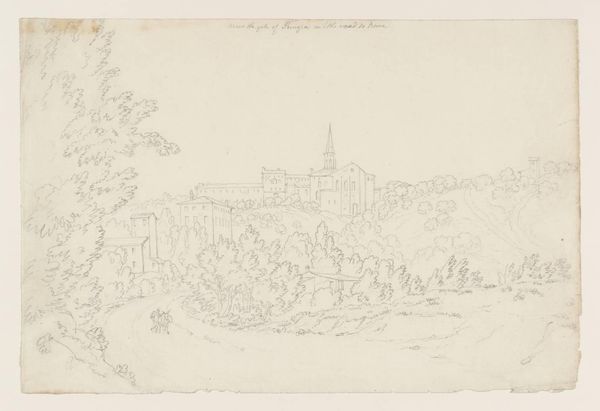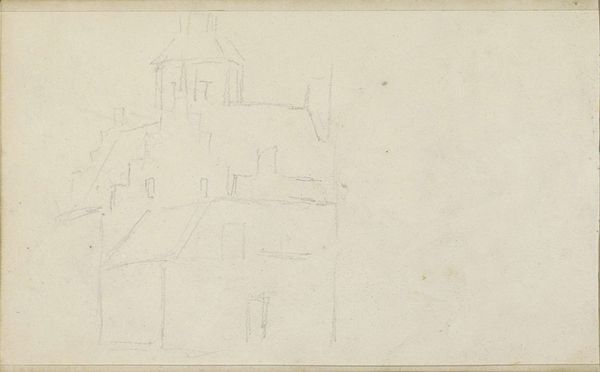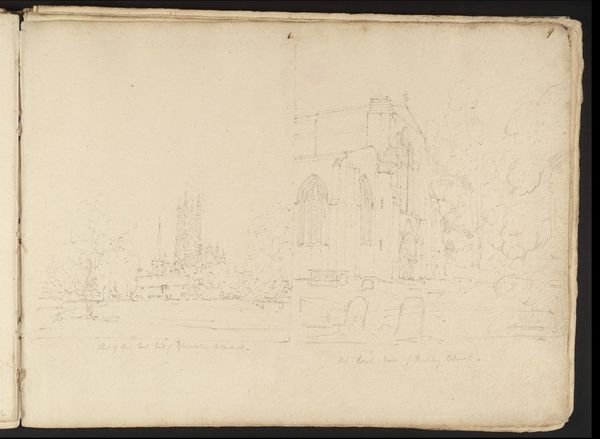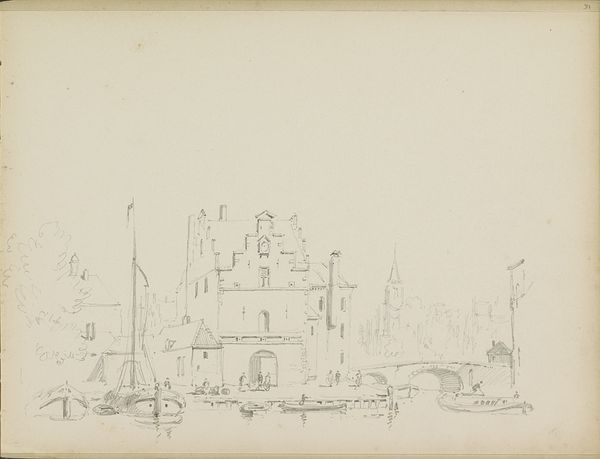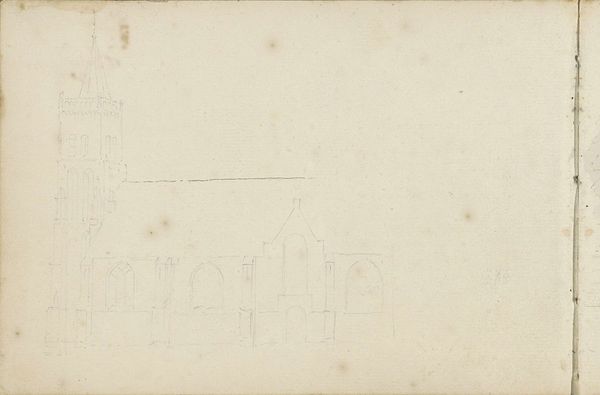
drawing, paper, pencil
#
drawing
#
landscape
#
paper
#
pencil
#
cityscape
Copyright: Rijks Museum: Open Domain
Editor: Here we have Petrus Johannes Schotel's "View of the Grote Kerk in Dordrecht," a pencil drawing on paper from somewhere between 1825 and 1875, currently held at the Rijksmuseum. It’s quite faint, almost skeletal in its simplicity. What do you make of it, looking at its formal qualities? Curator: Initially, I am struck by the distribution of weight. Observe the dominance of negative space. The architectural elements, while rendered with precision, occupy a relatively small portion of the composition. What does this sparseness convey? Editor: It feels distant, like a memory or a sketch done in passing, almost as if the emptiness surrounding the buildings amplifies the monumentality of the church in the background. Does the simplicity in composition invite deeper reflection, or does it perhaps detract from it? Curator: I propose that it actively promotes contemplation. The deliberate choice to strip down the elements to their barest essentials emphasizes form over detail, inviting the viewer to engage with the essence of the cityscape, to perceive its underlying structure. Note the stark contrast between the clean lines of the architecture and the sketchier rendition of the trees and surrounding landscape. It sets up an almost binary opposition, yes? Editor: I do see what you mean. There is that play of defined structure and looser form that catches the eye. How does this emphasis on the interplay between precision and suggestion shape our understanding of the artist's intent and the image’s effectiveness? Curator: We must look closely at how the elements work together in terms of the use of space. Schotel isn’t presenting us with a direct, uncomplicated transcription of a city but with a study of shapes, tones, and contrasts that echo but also transcend the architecture. It's a statement about artistic intervention itself. Editor: I'm now seeing the image not as a representational piece, but as a thoughtful study in spatial arrangement. I appreciate that I’m beginning to see the artist’s engagement with both the concrete and the more elusive qualities inherent within the act of pictorial construction itself. Curator: Indeed. These quiet arrangements on paper can often reveal louder statements than grand depictions might suggest.
Comments
No comments
Be the first to comment and join the conversation on the ultimate creative platform.
